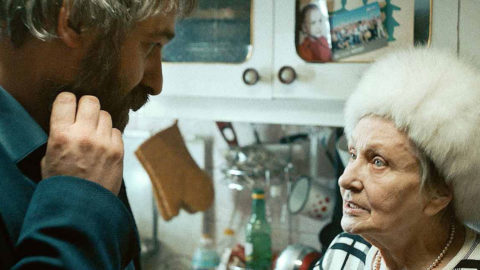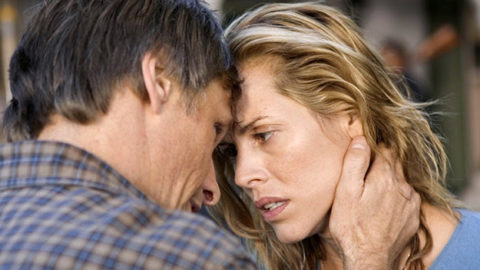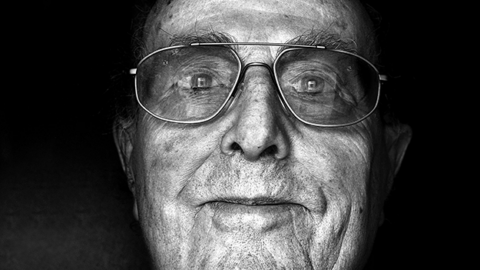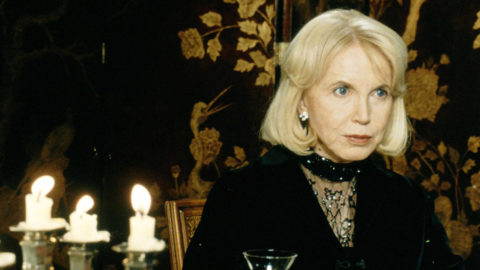Interview: Cristi Puiu
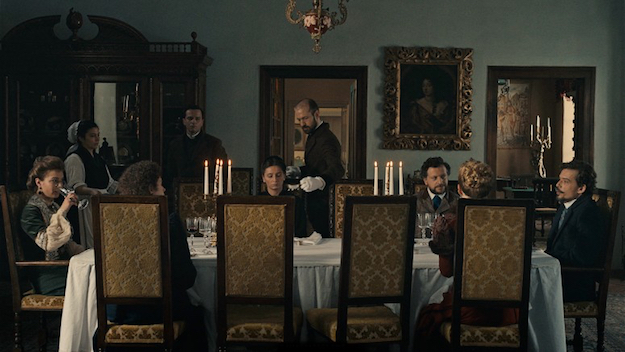
Malmkrog (Cristi Puiu, 2020)
In 2011, director Cristi Puiu, best known for setting the course for the Romanian New Wave with The Death of Mr. Lazarescu (2005), conducted an acting workshop in Toulouse based on episodes from Russian philosopher Vladimir Solovyov’s 1900 novel War, Progress, and the End of History: Three Conversations, Including a Short Story of the Anti-Christ. The sparsely staged scenarios, never intended to be shown publicly, eventually became Three Interpretation Exercises (2013), a three-part feature in which Solovyov’s text, a veritable taxonomy of modern social ills and humanity’s inherent evils, revealed a nascent philosophical streak in the filmmaker’s work. Malmkrog, Puiu’s new film, finds the director returning to Solovyov’s text for a period adaptation that determinedly pushes his cinematic gamesmanship to new lengths. Set in turn-of-the-20th-century Transylvania, at the snowy hillside manor of a blithe aristocrat named Nikolai (Frédéric Schulz-Richard), the film follows for nearly the entirety of its 200 minutes a series of winding conversations between a group of bourgeois elite—among them a Russian general’s wife (Diana Sakalauskaité), a devout young Christian girl (Marina Palii), a Franco-Russian nobleman (Ugo Broussot), and a middle-aged woman (Agathe Bosch) whose pessimistic worldview seems to embody the essence of Solovyov’s book.
As in his masterful 2016 feature Sieranevada, Puiu stages the drama as a kind of rigorously choreographed domestic dance between the performers and cinematographer Tudor Panduru’s impressively mobile camera, with volleys of dialogue (spoken primarily in French) braiding the loose narrative into a stream of near-continuous debates. Just a partial inventory of the subjects covered reads like a pocket history of the Western world’s fraught sociopolitical and religious development: war, race, immigration, the resurrection, European exceptionalism, and, eventually, the Antichrist, who may in fact be among the assembled guests. As the verbosity piles up, Puiu slyly upends the high-minded philosophizing with a handful of subtly self-effacing touches (including a rhetorical reference to all the grandstanding as a “theoretical exercise”) and at least one sudden (and unexpectedly violent) breach to the otherwise stately proceedings. Locating the middle ground between Luis Buñuel’s satirical view of the upper class and Manoel de Oliveira’s radically modernist revisions of period literature, Puiu has emerged with one of recent cinema’s most formally daring and intellectually provocative new works.
Following the premiere of Malmkrog at the 70th Berlinale, where the film opened the inaugural Encounters program, Puiu and I sat down to discuss his fascination with Solovyov’s novel, its sadly contemporary resonances, the conflation of history and memory, and how he went about constructing each of the film’s discrete parts.
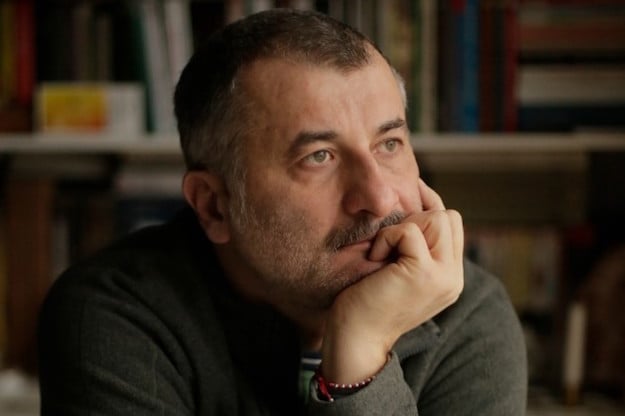
Cristi Puiu
What prompted you to return to Solovyov’s novel after Three Interpretation Exercises?
I wouldn’t say it’s a return at all, actually. Three Interpretation Exercises was, how to put it… a happy accident. It was the consequence of a workshop I gave. And then later, because some friends showed the film to some other friends, it was invited to a few festivals. But because of the nature and origins of the project we were legally unable to sell or distribute the film. It was indeed just an exercise, but I didn’t want to set aside the ideas we developed in this workshop. So I asked myself, can it be possible to make an audiovisual product out of a 19th-century philosophical text? I had a feeling that it could be done. But it was very hard to find the money. That’s why we didn’t start production until 2017.
So you started writing the script for Malmkrog while working on Three Interpretation Exercises?
Yes, I started straightway in 2011 and submitted the script shortly thereafter. But in fact I discovered these texts shortly after the fall of communism. The book was translated in Romania I think for the first time in 1992 or 1993. When I read this text, I didn’t even know that Solovyov existed, but I was extremely intrigued. There were several texts that I discovered in the ’90s, actually, because growing up in a communist country there were many books that were banned. This was one of them. There’s another one that’s called The Part of the Devil. It’s a really great book but very few people know about it. But that was the beginning. After finishing the workshop, I pretty much knew Solovyov’s book by heart—but not in Romanian, in French.
What was it about the text that interested you? Did you find that it related to modern-day Romania, or contemporary Europe in general?
It’s crazy because I found it to be extremely revelatory—prophetic in a way, and in different ways. And also pretty sad in the end, because it shows that we haven’t moved an inch. I have this feeling that we’re still there: the 20th century, two big wars, lots of people died, gulags, concentration camps, Cambodia, China—we didn’t learn the lesson. And now I fear we’re just waiting for the next episode of mass killings. But actually the thing that interested me the most was the position of Solovyov on the idea of good and evil, and him, as an author, advocating the position of Jesus, which is quite exotic today—people don’t talk about that, are not interested in it, or they simply dismiss it because it is uncool.
In any case, we finally got to the point where we decided to move forward—and I’m talking about myself and Anca, my wife, who is the producer of the film and really the engine behind the project. By the end of the workshop I didn’t even want to make the film, mainly because we didn’t have the money but also because I knew it would be hell to shoot. But Anca wanted so much to make the film, so I told her, “Listen, I want to call on these actors that I met during the workshop. If they are ready to do it, I’m going to do it. If not, we’re going to give the money back to the CNC commission, because I cannot do this.” The budget was less than 200,000 euros. And it’s a period drama, lots of days of shooting outside the town and many locations. Not just the location itself where we shot the film, but hotels, meals, transportation, etc. But the actors accepted this. We said, “We don’t have the money to pay you like you get paid in France. Are you ready to receive like 2,000 euros for the whole film?” And they said yes. We’ve been helped by things like this throughout.
I know it’s a long film. It’s a serious work based around dialogue and debates. You have to watch it three times in order to understand it—not to understand it as a film, but to get all the mechanisms of the thinking and arguments, to understand where they are going. For us it was not so difficult, because we had discussions while working in Toulouse, and then later while working together on the text, because in the end we cut like 30 percent of the script. We cut that all out together, talking through every detail of the text.
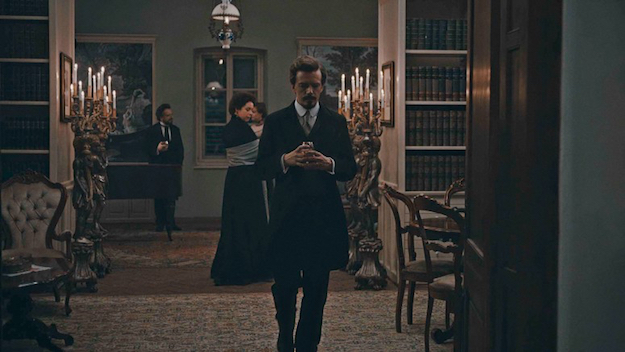
Malmkrog (Cristi Puiu, 2020)
How many actors from Three Interpretation Exercises are in the new film?
Two of them: Frédéric Schulz-Richard, who plays Nikolai, and Ugo Broussot, who plays Edouard. It was very tricky to convince them that it would be a good opportunity, because lots of people will hate the film. For those people, of course, it’s not a good opportunity. It’s more just, like, “Give me a break. Fuck off. Go to hell.”
Can you talk about the adaptation process, the actual writing of the script and how faithful you were to the text? Did you take dialogue straight from the source?
No, we cut the text down. We read it and then I decided to cut out all the moments that were too explanatory or too didactic. And then I made some interventions on the text—two interventions, actually, for what we might call an adaptation for the present time. And also there are just small details, like changing character names from Russian to Hungarian and Italian—names like Miklos and Umberto. With the original names, people would be asking themselves the wrong questions, so that I made the Catholic monk Umberto, like Umberto Eco. Maybe he’s Umberto Eco, I don’t know. Maybe it’s a reference to The Name of the Rose, I don’t know. But we played with lots of things like this. Agathe Bosch’s character didn’t have the name in the book—she was just “The Lady.” So naming her Madeleine is also playing with this same idea, like the madeleine of Proust when Proust is talking about the madeleine that is triggering his memory, because in the end it is a film about history and memory as well.
I believe history and memory are very close to one another, and from a certain perspective quite dangerous, because history can be a subjective memory of fact. For example, from somebody like me who was old enough and young enough to remember the fall of Ceausescu’s Romania. I have a completely different perspective on the events than some other people. I’m not saying my perspective is the right one, but I cannot help myself but wonder at what point our perspectives on the same events become so different. My brothers and my sister, for example, have all lived different events. So you have an official history of the events and then you have some alternative versions, whether we’re talking about the Russian Revolution, the French Revolution, the First World War, the Second World War, the birth of Christianity, or Islam—everyone has different stories regarding these events. What is history, then? Perhaps it’s not as simple as it seems to be.
You say that Malmkrog is a film about history and memory. In the press notes you also mentioned that it’s an interrogation of cinema, which I feel all your films are in a sense: they continue to get more rigorous and reflexive, as if you’re interrogating the image through the composition of each sequence. In this film each of the chapters seems built around certain formal ideas about how the camera can or cannot move. Some scenes are composed as sequence shots, others in shot-reverse-shot, which I don’t remember your using before. How early are you conceptualizing the visual look of these sequences? Is it outlined or noted in the script, or is it more intuitive?
Part of it is intuitive—a lot of my process is intuitive. But there is a construction—there’s an intention in the origin. For example, the shot/reverse-shot. I think these kinds of techniques belong to cinema, and not to poetry or theater or opera. So I thought to myself that this would be a kind of challenge, because I have a tendency to do what I understand—if I don’t understand, I cannot do it. That’s why my first film was handheld, because it was hard for me to understand the idea of the camera on the tripod. I mean, I watch films with the camera on the tripod, with shots where the camera does not move. Fixed shots. I love that. I love Aki Kaurismäki. I find him to be a great filmmaker. But how to do this?
Originally I thought the film would be split into three parts. You’d have three dialogues with each episode filmed differently. But then afterward, in the editing room, I realized, no, it’s wrong, because actually the weight of the characters can be distributed accordingly across a number of characters. Originally there were five characters talking in three parts. But why not have six characters talking in six parts? The butler does not exist in the book, so I invented this chapter for him and this is the single chapter that is filmed like Sieranevada, in a manner how I understand cinema—where every cut is a jump in time. And then we have long sequences in the first episode, where there’s fake continuity. But it was important to have this fake continuity, because there’s a fake continuity all over the film. You have the Christmas tree in one episode and then you don’t have it in another. Outside, in one sequence, it’s green, and in another you have snow—there is an intervention in the chronology. If you pay attention the second time you watch the film, there are a lot of things that don’t work precisely or fit within the chronology. For example, is it a real revolution that is taking place with an assault on the mansion, or is the music that rises in that scene just a reference to something else? For me, that music comes from the beginning of cinema, American films, comedies and silent comedies. It’s this kind of ragtime skedaddle. I find it to be funny and at same time a right reference to cinema.
When we began working, I wanted to begin and end the film with episodes set in a theater with a symmetric image of the characters entering the stage, where the contact, conflict, and controversy would then make them slide little by little toward what cinema might be, slowly leaving the theater behind like you see early cinema. In the first films, you have this camera that does not move, with people behaving like they’re on stage. This was actually the most sexy thing to do, in playing with the performance style. It is a freestyle film in a way, meaning that the ideas were built up on the set. I told some journalist earlier that I wanted to put an astronaut at the end of the film, entering in slow motion to a sound of the Bee Gees. That’s what I mean about freestyling—we went very far. Then at one point I wanted to put sheep inside the house. And I knew this is The Exterminating Angel (1962), but fuck it. You don’t escape tradition. The creation of every creator on this planet is strongly rooted in tradition in a way that you cannot speak your mother tongue if the mother is not there. You cannot be a painter if before you there wasn’t one. Everyone has his masters. So yes, of course, the film resounds with Buñuel and, for me, also Cassavetes and others.
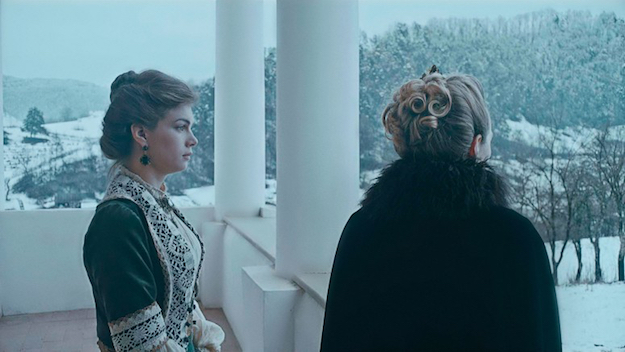
Malmkrog (Cristi Puiu, 2020)
And I know you referenced Eric Rohmer as an inspiration for Three Interpretation Exercises. How aware are you of these influences when constructing a film?
My Dinner with Andre (1981) actually triggered this intention of making a film based almost entirely on dialogue—as a kind of response to that film. But it was important for me not to do it just like that film, imagining dialogue myself, but to force or push the limits a bit and propose dialogue that is philosophical, which is like… the wrong choice. A priori, what the fuck is that, you know? And we talked about it: is it possible, instead of making a TV series like any other TV series, for us to make a film based on dialogues similar to Plato? Because of this, and the emphasis we put on the actors, the acting has to be perfection, in order for you to follow.
There’s a verse by William Blake that I like: “All the infinity in the palm of your hand and eternity in an hour.” That line has stayed with me from the moment I first read that poem, when I was into painting and I didn’t dream of becoming a filmmaker. I thought it was an extremely strong idea, if you can get to the point of shooting or taking a photo of this fragment, to have the whole building in this fragment [traces a square frame on the wall]. It’s very difficult to get to this point. But when you do, you begin to understand the whole—it’s a sort of like fractal philosophy, with the element and the whole being one. If you accomplish this, then you’re in heaven.
Jordan Cronk is a critic and programmer based in Los Angeles. He runs Acropolis Cinema, a screening series for experimental and undistributed films, and is a member of the Los Angeles Film Critics Association.



